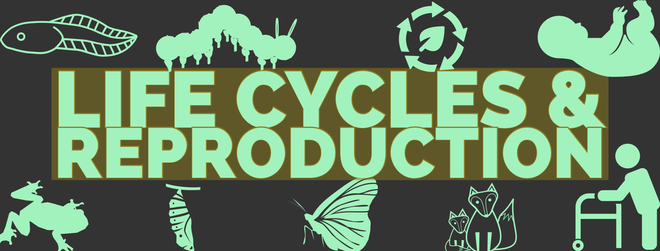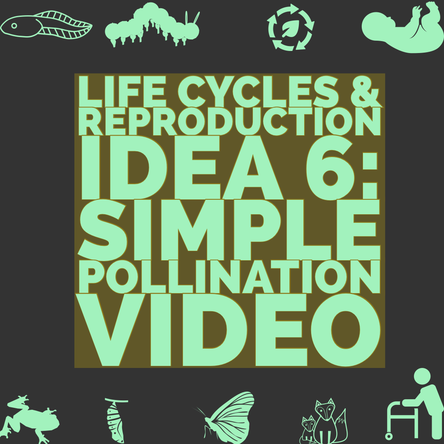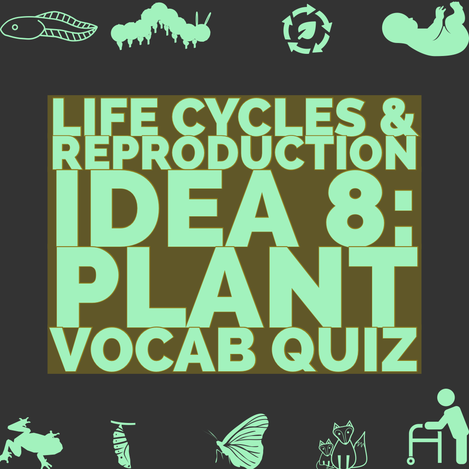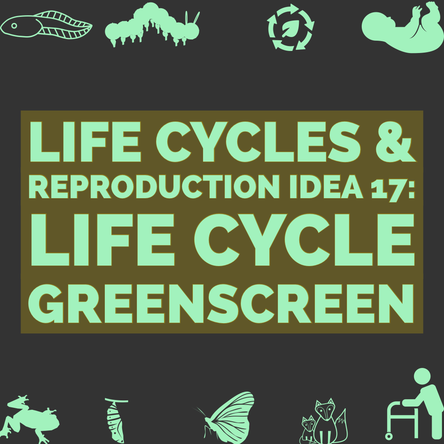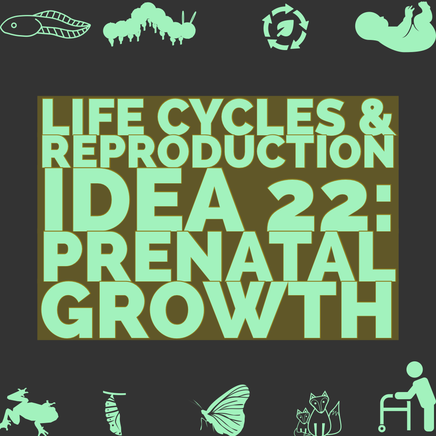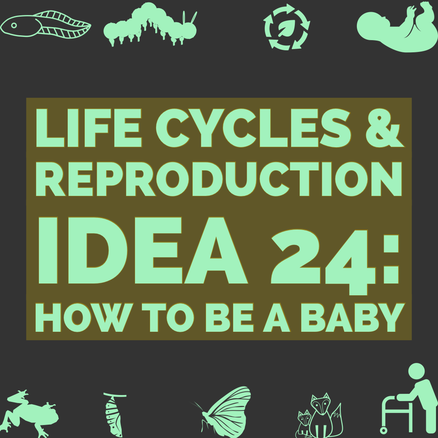LIFE CYCLES AND REPRODUCTION IDEA 1 - CHOICE BOARDHere is the first in a new series of videos that looks to cover objectives in the Year 5 Science curriculum of Living things and their Habitats and Animals including Humans. As always, these topic pages are not to be used as a scheme of work but instead showcase how creative tech can be used to enhance, support, empower and make learning accessible.
In this first video, we look at using a choice board with Google Slides and Seesaw for children to start learning about this topic. Click the picture to access the video if you have subscribed to Facebook. Click here if you need to subscribe on Facebook. |
LIFE CYCLES AND REPRODUCTION IDEA 2 - POLLINATION IN AR AND VRHere is the next video in the series looking at Life Cycles and Reproduction in KS2 Science.
In this next video, pupils learn about the process of pollination using Augmented Reality and Virtual Reality. Click the picture to access the video if you have subscribed to Facebook. Click here if you need to subscribe on Facebook. |
LIFE CYCLES AND REPRODUCTION IDEA 3 - LABELLING A PLANTHere is the next video in the series looking at Life Cycles and Reproduction in KS2 Science.
In this next video, pupils demonstrate their knowledge of plants by labelling all the different features. Click the picture to access the video if you have subscribed to Facebook. Click here if you need to subscribe on Facebook. |
LIFE CYCLES AND REPRODUCTION IDEA 4 - EXPLAINING PARTS OF A PLANTHere is the next video in the series looking at Life Cycles and Reproduction in KS2 Science.
In this next video, pupils demonstrate their knowledge of plants by explaining all the different features. Click the picture to access the video if you have subscribed to Facebook. Click here if you need to subscribe on Facebook. |
LIFE CYCLES AND REPRODUCTION IDEA 5 - VIDEO GUIDES OF A PLANTHere is the next video in the series looking at Life Cycles and Reproduction in KS2 Science.
In this next video, pupils demonstrate their knowledge of plants by creating a video explaining all the different features. Click the picture to access the video if you have subscribed to Facebook. Click here if you need to subscribe on Facebook. |
LIFE CYCLES AND REPRODUCTION IDEA 6 - SIMPLE POLLINATION VIDEOHere is the next video in the series looking at Life Cycles and Reproduction in KS2 Science.
In this next video, pupils can create a simple animation to explain how pollination works. Click the picture to access the video if you have subscribed to Facebook. Click here if you need to subscribe on Facebook. |
LIFE CYCLES AND REPRODUCTION IDEA 7 - POLLINATION ANIMATIONHere is the next video in the series looking at Life Cycles and Reproduction in KS2 Science.
In this next video, pupils can create a more challenging animation to explain how pollination works. Click the picture to access the video if you have subscribed to Facebook. Click here if you need to subscribe on Facebook. |
LIFE CYCLES AND REPRODUCTION IDEA 8 - PLANT VOCAB QUIZHere is the next video in the series looking at Life Cycles and Reproduction in KS2 Science.
In this next video, pupils can create their own quiz to challenge others in the class about vocabulary linked to the topic. Click the picture to access the video if you have subscribed to Facebook. Click here if you need to subscribe on Facebook. |
LIFE CYCLES AND REPRODUCTION IDEA 9 - FEATURES OF WIND VS INSECTHere is the next video in the series looking at Life Cycles and Reproduction in KS2 Science.
In this next video, pupils look at the similarities and difference of flowers who depend on wind vs insect pollinations. Click the picture to access the video if you have subscribed to Facebook. Click here if you need to subscribe on Facebook. |
LIFE CYCLES AND REPRODUCTION IDEA 10 - ASEXUAL PLANT REPRODUCTIONHere is the next video in the series looking at Life Cycles and Reproduction in KS2 Science.
In this next video, pupils explain how asexual reproduction works in different plants. Click the picture to access the video if you have subscribed to Facebook. Click here if you need to subscribe on Facebook. |
LIFE CYCLES AND REPRODUCTION IDEA 11- SEXUAL VS ASEXUALHere is the next video in the series looking at Life Cycles and Reproduction in KS2 Science.
In this next video, pupils consider the advantages and disadvantages of sexual vs asexual reproduction. Click the picture to access the video if you have subscribed to Facebook. Click here if you need to subscribe on Facebook. |
LIFE CYCLES AND REPRODUCTION IDEA 12 - LBQ ASSESSMENTSHere is the next video in the series looking at Life Cycles and Reproduction in KS2 Science.
In this next video, pupils are able to assess their understanding of the topic by working through some of the fantastic LBQ question sets. Click the picture to access the video if you have subscribed to Facebook. Click here if you need to subscribe on Facebook. |
LIFE CYCLES AND REPRODUCTION IDEA 13 - REPRODUCTION IN MAMMALSHere is the next video in the series looking at Life Cycles and Reproduction in KS2 Science.
In this next video, pupils share their knowledge of how mammals reproduce and the different stages of reproduction. Click the picture to access the video if you have subscribed to Facebook. Click here if you need to subscribe on Facebook. |
LIFE CYCLES AND REPRODUCTION IDEA 14 - LIFE CYCLE OF AN ANIMAL VIDEOHere is the next video in the series looking at Life Cycles and Reproduction in KS2 Science.
In this next video, pupils explain the life cycle of an animal by creating a greenscreen video with their digital avatar. Click the picture to access the video if you have subscribed to Facebook. Click here if you need to subscribe on Facebook. |
LIFE CYCLES AND REPRODUCTION IDEA 15 - LIFE CYCLE DIAGRAM POPPLETHere is the next video in the series looking at Life Cycles and Reproduction in KS2 Science.
In this next video, pupils create a diagram of a life cycle in Popplet. Click the picture to access the video if you have subscribed to Facebook. Click here if you need to subscribe on Facebook. |
LIFE CYCLES AND REPRODUCTION IDEA 16 - LIFE CYCLE DIAGRAM PIC COLLAGEHere is the next video in the series looking at Life Cycles and Reproduction in KS2 Science.
In this next video, pupils create a diagram of a life cycle in Pic Collage. Click the picture to access the video if you have subscribed to Facebook. Click here if you need to subscribe on Facebook. |
LIFE CYCLES AND REPRODUCTION IDEA 17 - LIFE CYCLE GREENSCREENHere is the next video in the series looking at Life Cycles and Reproduction in KS2 Science.
In this next video, pupils explain the life cycle of an animal using Greenscreen. Click the picture to access the video if you have subscribed to Facebook. Click here if you need to subscribe on Facebook. |
LIFE CYCLES AND REPRODUCTION IDEA 18 - EXPLAINING STAGES OF A LIFE CYCLEHere is the next video in the series looking at Life Cycles and Reproduction in KS2 Science.
In this next video, pupils explain the life cycle of an animal using Chatterpix kids. Click the picture to access the video if you have subscribed to Facebook. Click here if you need to subscribe on Facebook. |
LIFE CYCLES AND REPRODUCTION IDEA 19 - LIFE CYCLE VIDEOSHere is the next video in the series looking at Life Cycles and Reproduction in KS2 Science.
In this next video, combining work from the previous ideas pupils create videos to explain a life cycle. Click the picture to access the video if you have subscribed to Facebook. Click here if you need to subscribe on Facebook. |
LIFE CYCLES AND REPRODUCTION IDEA 20 - PAPER PROTOTYPING LIFE CYCLEHere is the next video in the series looking at Life Cycles and Reproduction in KS2 Science.
In this next video, pupils create a paper-based app to explain a life cycle. Click the picture to access the video if you have subscribed to Facebook. Click here if you need to subscribe on Facebook. |
LIFE CYCLES AND REPRODUCTION IDEA 21 - HUMAN LIFE CYCLE TIMELINEHere is the next video in the series looking at Life Cycles and Reproduction in KS2 Science.
In this next video, pupils create an interactive timeline of the human life cycle. Click the picture to access the video if you have subscribed to Facebook. Click here if you need to subscribe on Facebook. |
LIFE CYCLES AND REPRODUCTION IDEA 22 - PRENATAL GROWTHHere is the next video in the series looking at Life Cycles and Reproduction in KS2 Science.
In this next video, pupils explore and explain how a fetus grows in a mother's womb. Click the picture to access the video if you have subscribed to Facebook. Click here if you need to subscribe on Facebook. |
LIFE CYCLES AND REPRODUCTION IDEA 23 - COMPARING GESTATION PERIODSHere is the next video in the series looking at Life Cycles and Reproduction in KS2 Science.
In this next video, pupils collect and explore data of different animals and their gestation periods. Click the picture to access the video if you have subscribed to Facebook. Click here if you need to subscribe on Facebook. |
LIFE CYCLES AND REPRODUCTION IDEA 24 - HOW TO BE A BABYHere is the next video in the series looking at Life Cycles and Reproduction in KS2 Science.
In this next video, pupils create an instructional video on how to be a baby. Click the picture to access the video if you have subscribed to Facebook. Click here if you need to subscribe on Facebook. |
LIFE CYCLES AND REPRODUCTION IDEA 25 - DIFFERENT STAGES OF CHILDHOODHere is the next video in the series looking at Life Cycles and Reproduction in KS2 Science.
In this next video, pupils explore the stages of childhood and achievements at different times. Click the picture to access the video if you have subscribed to Facebook. Click here if you need to subscribe on Facebook. |
LIFE CYCLES AND REPRODUCTION IDEA 26- PUBERTYHere is the next video in the series looking at Life Cycles and Reproduction in KS2 Science.
In this next video, pupils look at the way their bodies will change when they go through puberty. Click the picture to access the video if you have subscribed to Facebook. Click here if you need to subscribe on Facebook. |
LIFE CYCLES AND REPRODUCTION IDEA 27 - OLD AGEHere is the next video in the series looking at Life Cycles and Reproduction in KS2 Science.
In this next video, pupils turn themselves into pensioners to talk about how their bodies change in old age. Click the picture to access the video if you have subscribed to Facebook. Click here if you need to subscribe on Facebook. |
